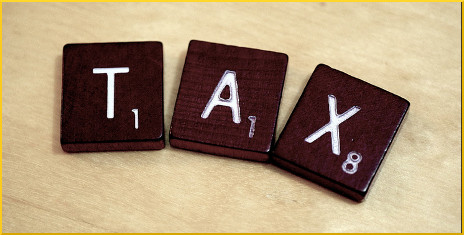The government is supposed to protect us. If people are jumping off a certain bridge, the authorities strengthen the fencing and paint the whole structure a bright color, to discourage suicidal ideation. But when other threats tempt us from the path of health, the government only has the crude tools of prohibition and taxation. Dr. Pretlow says:
Our country has to approach the obesity problem similar to smoking, first banning fast food outlets in hospitals, like cigarette machines were first banned in hospitals, and banning fast food outlets in the vicinity of schools. Recall that, 50 years ago, smoking was the norm and even “cool.” Smoking is now socially unacceptable. Overeating needs to become socially unacceptable.
Certain foods have become like drugs, and our society’s way of dealing with a legal drug is to tax the daylights out of it. Nicotine and alcohol are taxed at the check-out counter. Caffeine isn’t yet taxed by the government, but is taxed in a different way—we pay in oxygen and life, as rain forests are destroyed to make space for coffee bean cultivation.
Some drug-like foodstuffs contain a huge proportion of additives, an unacceptable dose of toxins, or both. People eat stuff that resembles food, things that are edible but not assimilable: things that taste good today, but shorten our lives. Those are the activities of a junkie, and those foods function as drugs, so QED.
People eat stuff that is so far from resembling actual food that when regulation is the issue, it is not quite clear whether the Food and Drug Administration should even be in charge. If the Food wing tried to prosecute, the corporate lawyers would only have to say, “When a department with Food in its name makes the rules over us, then obviously what we produce is food. So, what’s your problem? Go away.” It follows that maybe snacks ought to the regulated by the Drug wing of the FDA.
Using Tax Policy to Reduce Obesity
A Harvard University study said this about taxing sugar-sweetened beverages:
The government can set policies that influence the price and availability of foods that, in turn, influence the risk of obesity. For example, existing small taxes on soft drinks are associated with slightly lower BMI and lower consumption of these beverages. The taxes are related to a greater decrease in consumption and overweight for children who are already overweight or whose families have a low income.
They also figured out that a tax on SSBs of 1 percent per ounce would reduce consumption by 24 percent and, incidentally, raise $80 billion for the government in five years. This could be enough to send every obese child to a residential facility with a good track record, and buy them all smartphones equipped with the W8Loss2Go app pre-installed.
There are some pretty good arguments for putting punitive taxes on junk food, fast food, sugar, and beverages. They damage the health of the people, and consequently drain the national budget. As advocates point out, something has changed the culture’s attitude toward smoking, and fewer people take up the habit these days. Maybe taxation was that agent of change. Whatever it was, anti-obesity warriors want to identify and adopt it. Returning from the ECO 2011 conference in Istabul, Dr. Pretlow wrote:
The best talk I heard was a pediatric pulmonologist who spoke on “Lessons Learned from Tobacco Control: Obesity, the New Tobacco?” She showed amazing copies of documents from the tobacco industry over the past 20 years discrediting evidence of health damage from tobacco use. It is a somber thought that food companies will follow suit in regard to discrediting evidence that their products are causing obesity.
The Nestle’s company representative and a representative of the fast food industry both stood up and argued that there is no evidence that their products are contributing to obesity.
Of course they did.
Your responses and feedback are welcome!
Source: “Toxic Food Environment – How Our Surroundings Influence What We Eat,” harvard.edu, undated
Image by Simon Cunningham
SOURCE: Childhood Obesity News – Read entire story here.



